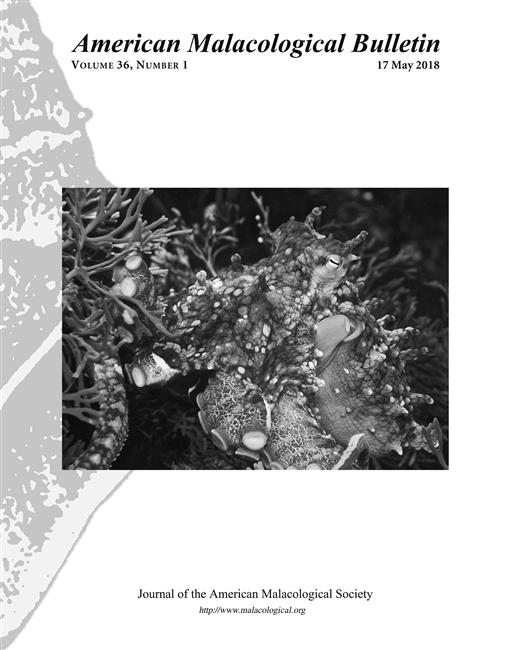There are few studies on pelagic mollusks from the California Current, despite their ecological importance and vulnerability to climate change (e.g., ocean acidification and hypoxia). We analyzed abundances of holoplanktonic mollusks during three years (2006–2008) along a transect-line parallel to the Baja California coast. The main differences in physical factors were increasing temperature and salinity from north to south, and lower dissolved oxygen concentration south of Punta Eugenia (28°N). The lowest oxygen concentrations occurred in summer, with hypoxic conditions (< 0.5 ml · L-1) in the upper 100 m depth at some locations. Planktonic mollusk abundance did not differ along the latitudinal gradient, excepting Desmopterus pacificus Essenberg, 1919 and individuals from the genus Pterotrachea Forskal, 1775. In contrast, the temporal variability was high, mainly in a seasonal scale but also among years. The influence of El Niño 2006–2007 and La Niña 2007–2008 were evident by a sharp increase of Corolla spectabilis Dall, 1871 in April 2007 during the El Niño-La Niña transition. During 2008, pelagic mollusks remained with moderate abundance in winter-spring despite the high chlorophyll concentrations recorded (up to 3.26 mg · m-3). Subsequently, during the relaxation of a first pulse of La Niña in July 2008, there was a rebound in the abundance of the heteropod Atlanta Lesueur, 1817. and individuals in the Order Gymnosomata. The oxygen gradient inversely influenced mollusk abundance in most of the genera (Clio Linnaeus, 1767, Limacina Bosc, 1817, Atlanta, and Firoloida Lesueur, 1817) and the order Gymnosomata, but for Cavolinia Abildgaard, 1791, Creseis Rang, 1828, Desmopterus, and Pterotrachea, the salinity gradient was more influential. Therefore, holoplanktonic mollusks genera were useful indicators of climatic variability.
How to translate text using browser tools
1 May 2018
Holoplanktonic Mollusks off Western Baja California During the Weak El Niño 2006-07 and Further Transition to La Niña
Ofir Molina González,
Bertha E. Lavaniegos,
José Gómez Valdés,
Martín De la Cruz Orozco
ACCESS THE FULL ARTICLE

American Malacological Bulletin
Vol. 36 • No. 1
May 2018
Vol. 36 • No. 1
May 2018




